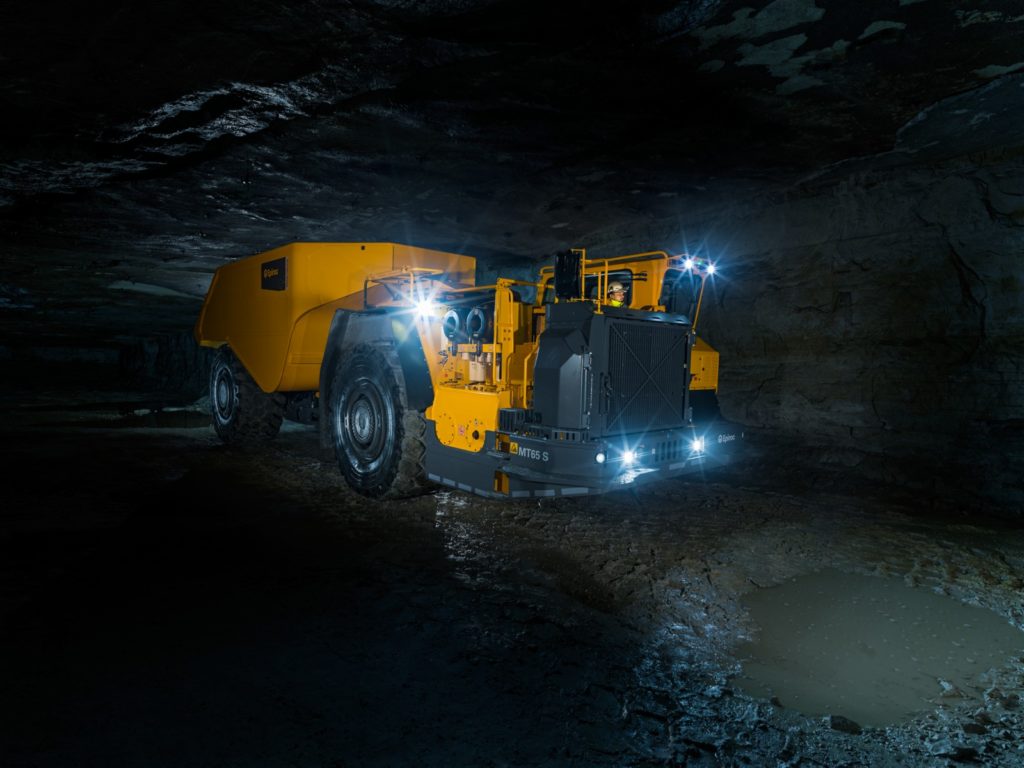Epiroc released its Q4 2023 results today, and the overall trend with regard to mining was very positive. In the quarter, Epiroc’s order intake increased to MSEK 14,388, corresponding to an organic growth of 7%. Within mining specifically, the activity levels were high, and the OEM won several large orders. Mining customers represented 84% (79) of orders received in the quarter and construction customers 16% (21). The higher share of orders from mining customers reflected weaker demand from construction customers. Overall revenues increased 12% to MSEK 15,568, an organic increase of 8%; while operating profit increased 4% to MSEK 3,349.
IM Editorial Director Paul Moore caught up with Epiroc President & CEO Helena Hedblom following the Q4 results release. On the order intake increasing and positive mining results she stated: “I would say there has been good activity within copper, gold and iron ore; we saw a 13% organic increase on equipment orders and we have won several large equipment deals in the quarter. But also the parts and service business is going strong within mining so we are up 6% organic there. We also have good development on consumables towards mining but not towards construction so that is what is pulling that overall number down for us. Overall, mining has been seeing high activity and we have been landing more large orders – almost SEK 1.2 billion – more so than we have seen historically for this quarter.”
Three orders are cited in the Q4 results. Two relate to mining equipment – Shandong Gold Group, one of China’s largest gold mining companies, has ordered a fleet of mine trucks, loaders, and drill- and rock reinforcement rigs to expand production at the Jiaojia, Xincheng, and Sanshandao gold mines. The order is valued at about MSEK 350. Then Epiroc won a large order, MSEK 280, for underground equipment that will be used for a new copper mine in Türkiye. Eti Bakir, Türkiye’s largest mining company and a long-time customer of Epiroc, has ordered a fleet of face drilling rigs, production drilling rigs, mine trucks and loaders.
Of course it is worth pointing out that these are still traditional diesel fleet orders, though Eti Bakir as part of its deal will get to test run one of Epiroc’s battery-electric Minetruck MT42 SG haulers at the Kastamonu Küre underground copper mine. But overall is diesel still very dominant? Hedblom responded: “Yes battery still forms a small proportion of overall sales, and traditional diesel machines still dominate for now. But these traditional machines are quickly becoming much more advanced and automation ready – that is certainly a clear trend that we see across the different mining regions. And moving forward of course we see that battery will gradually increase its overall share.”
Hedblom added that Epiroc will have several “exciting” launches in the battery area going forward, including for the heavier truck segment. “But if we start to look at surface mining such as on our larger drills, then we are also looking at other alternatives and combinations from a technology standpoint as these machines are much heavier and require more power.”
What about hybrid machines as a bridge to battery? Hedblom acknowledged these as playing a role but says the focus remains squarely on the battery machines in terms of the complete solution – Epiroc is aiming at having a complete BEV underground line up by 2025: “We are well underway with electrifying our full underground equipment line up and will continue to do so with a focus on battery electric. But we also continue to explore all opportunities and use of different technologies, including hybrid offerings, to make sure we are always well positioned.” In November, Epiroc signed a MoU with Byrnecut, one of the world’s largest underground mining contractors, to partner on the development of the next generation of diesel underground loaders with electric drive.
The third big order is significant as it does not relate to machines, but instead to digital solutions. Epiroc has won a multi-year order, its largest ever for digital solutions, from the mining company Codelco in Chile. The package of advanced digital solutions will strengthen safety and productivity at the El Teniente copper mine. The five-year project is valued at about MSEK 250, and the first phase was booked in the fourth quarter 2023 at a value of about MSEK 50.
Is it significant that this is a standalone digital deal? And is interest in collision avoidance a part of what is driving that? Hedblom told IM: “Yes we are starting to see more digital focused tenders coming out from customers. These are now often separate from the machines and cover a broad suite of digital solutions that our customers need. It could be a combination of things – mixed fleet automation, collision avoidance technology, positioning and fleet management all in one tender. This one with Codelco covers our full suite of products. Looking at collision avoidance specifically, now we have a Level 9 solution, and we are seeing good interest and demand from many parts of the world now because the technology is available to improve safety very significantly in mining operations. We think collision avoidance will play a really central role, together with automation.”
VP Electrifiation at Epiroc Jerome Cloue also had some interesting insights in a late 2023 Electrification webinar on Epiroc battery machine uptake. Interestingly Epiroc saw a two times higher average BEV utilisation rate for 2023 versus 2022 which it said was indicative of the machines moving from trial phases into full production with the early adopters. As of end September 2023, Epiroc said it had 28 BEV sites globally, up from 25 in April 2023, plus there was a Batteries as a Service contract with 80% of the units. The number of recurring orders was up to 10.











